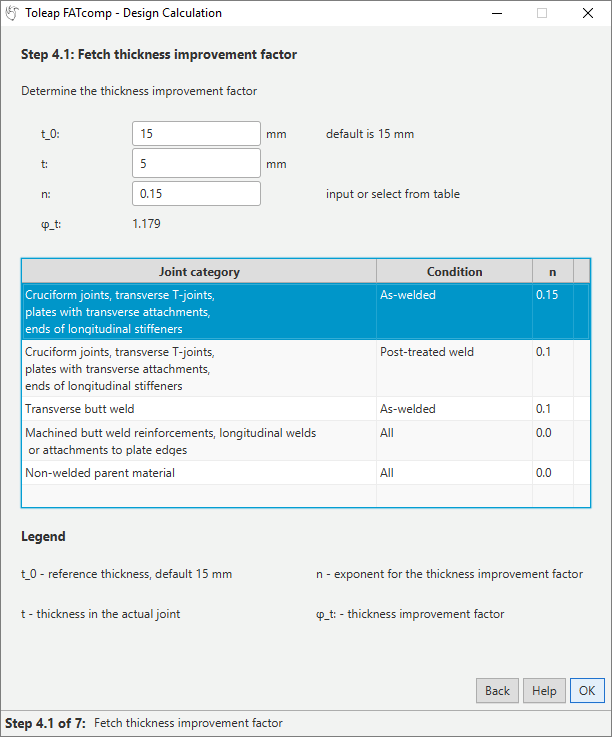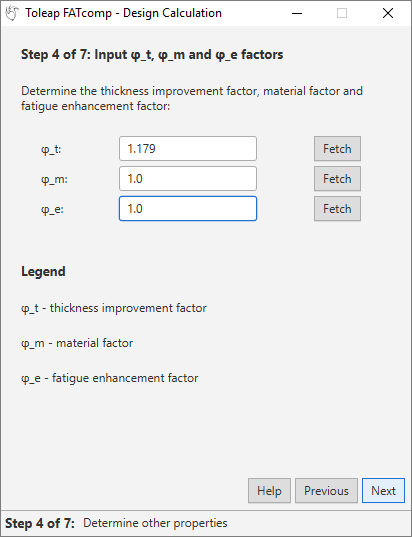
Check the links: thickness factor, material factor and fatigue enhancement factor.
For each one of the factors there is a Fetch, that will support you further in selecting the values of the parameters, picture 1. We recommend you use the fetch, where the input values are checked further by FATcomp.


Picture 1: The thickness improvement, material and fatigue enhancement factors guide
The Fetch for the thickness improvement factor uses a reference thickness, the thickness in the design case and an exponent n to determine the thickness factor. Normally the reference thickness is 15 mm. Insert the thickness of the material and select the exponent from the table. Here we select the first row giving the exponent 0.5. The thickness improvement factor is finally computed to 1.179.


Picture 2: Fetch thickness improvement factor.
The Fetch for the material factor uses the minimum yield strength of the material and the material curve for the chosen joint to calculate the influence of material strength. In the example we have no effect of the increased yield strength according to the test results for this weld joint (curve L). The material factor is 1.0.


Picture 3: The fetch for the material factor
The Fetch for the stress alternation factor uses the R-value to determine the stress alternation factor, picture 4. Often the case is as in our example that the residual stresses are higher than 50 MPa and the stress alternation factor is subsequently computed to 1.0.


Picture 4: The fetch for the stress alternation factor
The thickness improvement, material and fatigue enhancement factors guide is completed, picture 5. We have an influence of the material thickness, but neither influence from the yield strength nor residual stresses.


Picture 5: The thickness improvement, material and fatigue enhancement factors guide is completed
When we click on next the input is completed.
The next step in the computation is the guide for the partial safety factors.